Burmese pythons: Latest hunt netted over 200 of the invasive species in the Everglades
Editor's note: An earlier version of this story incorrectly reported the number of snakes caught during the 2023 Florida Python Challenge. A total of 209 pythons were caught.
* * *
Catching pythons is less about skill and more about technique — at least according to Toby Benoit.
The writer, novelist, and python hunter from Inverness set out for this year’s 2023 Florida Python Challenge with a mission.
With a team of first-time python hunters, Benoit led the group through the darkness of the Everglades. For thousands of years, the Everglades have served as a vital ecosystem for many reptiles, amphibians, and mammals. However, since Burmese pythons started showing up, massive amounts of mid-sized mammals have been devoured by the snakes.
According to experts, the python's wide-ranging appetite has led to its growth and made it unlikely to be eradicated.
More: Viral video of python that swallowed gator opens doors for scientist and freedive model
“I remember the Everglades as being this wildlife wonderland," Benoit said. "There were just herds of deer. You could go down to the levees, and you’d see bobcats, possums, raccoons, and birds like out of a National Geographic study of Africa. It was just amazing,”
Since the python invasion, the Everglades is a “ghost town,” he said.
After five years of python hunting, Benoit realized how quickly pythons adapt to their surrounding environment.
“I think the best advice I received was don’t focus on looking at everything to be a snake; start focusing on everything that doesn’t look like a snake,” said Benoit. “They have the greatest camouflage pattern in all of nature.”
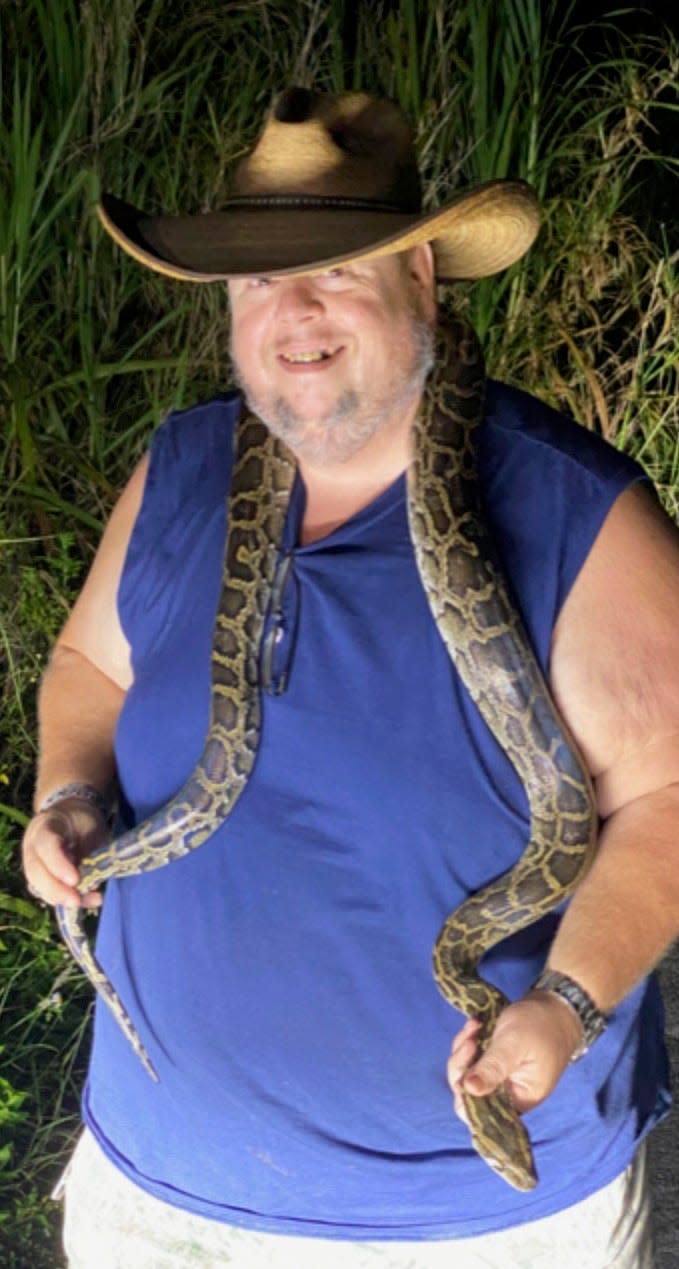
Python Challenge nabbed about 209 of the invasive snakes
During the 10-day 2023 Florida Python Challenge, held Aug. 4-13, competitors wrangled about 209 snakes. While many competitors were likely tempted by the $10,000 prize, others like Benoit were in it for the wildlife.
Benoit is just one of the warriors in the fight against the Burmese python population. Dozens of wildlife biologists and reptile experts have dedicated countless hours to stopping the spread of these destructive pythons.
“We have a generalist apex predator that is disrupting the neutral balance across the greater Everglades ecosystem,” said Ian Bartoszek, wildlife biologist and environmental science project manager for the Conservancy of Southwest Florida.
Bartoszek and others at the conservancy use radio telemetry to track pythons. His team has caught a record number of pythons this season.
Pythons expand territory: Unverified but 'credible sightings' for first time in Lox Refuge
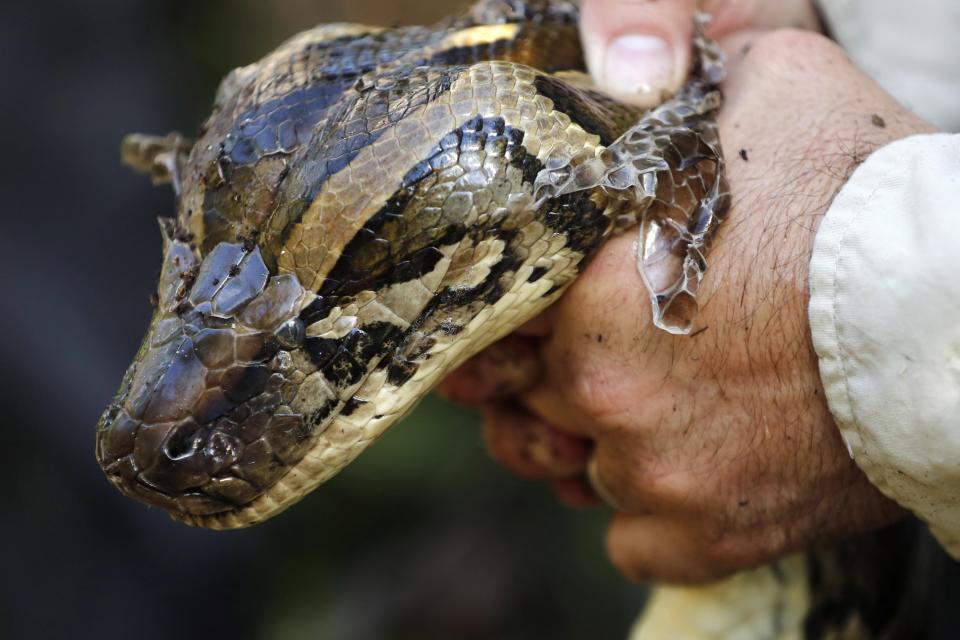
“We’re nearing the end of this season, and we’re close to 5,000 pounds pulled out since November,” Bartoszek said.
Bartoszek and his team focus on finding males that will lead them to the big, reproductively active females. However, any contribution to the removal effort is appreciated.
“There needs to be bigger picture landscape-level tools developed to address the problem,” according to Bartoszek.
Bartoszek believes that “this issue isn’t going away, and we need an army of observers out there.”
People from all backgrounds and skill levels have joined the python-removal effort.
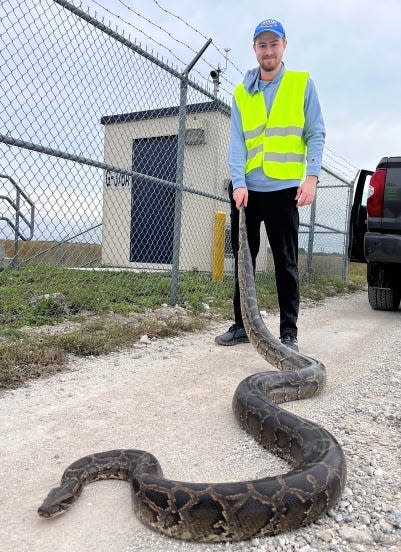
Chicken of the Glades: Can we eat pythons? Mercury levels studied to see if snakes could be the new other white meat
Among them is 23-year-old Florida Atlantic University student Nick Ziegler. Civil engineering student by day and python hunter by night, Ziegler is contracted by the Florida Fish and Wildlife Conservation Commission (FWC) to remove Burmese pythons from the Everglades.
“I have two apps on my phone that track me while I’m out in the Everglades,” Ziegler said. “I’ll turn on the tracking and then drive around on levees or roads. When I find a python, I grab it, put it in a bag, and mark the GPS location where I found it. Then I keep going.”
Ziegler has noticed the growth of the python population over the past few years.
“I used to go down south to catch pythons, but I’ve been catching them up north. I caught my first python in Palm Beach County over winter break,” Ziegler said.
More: Officials killed 34 caged pythons, but didn't mean to kill a pet boa constrictor named Big Shirl
Ziegler expects invasive pythons will soon occupy many of his favorite natural areas.
“There are places down south you’ll go, and you’ll literally never see a mammal there. It’s really rare.” The more the pythons eat up the native wildlife, “the less food there is for other animals to eat,” Ziegler said.
Indiana real estate broker Amy Siewe came down to check out the problem when she heard about it. But after catching her first python, she was “totally hooked.”
She was so compelled by the python problem that she moved to Naples to start full-time python hunting.
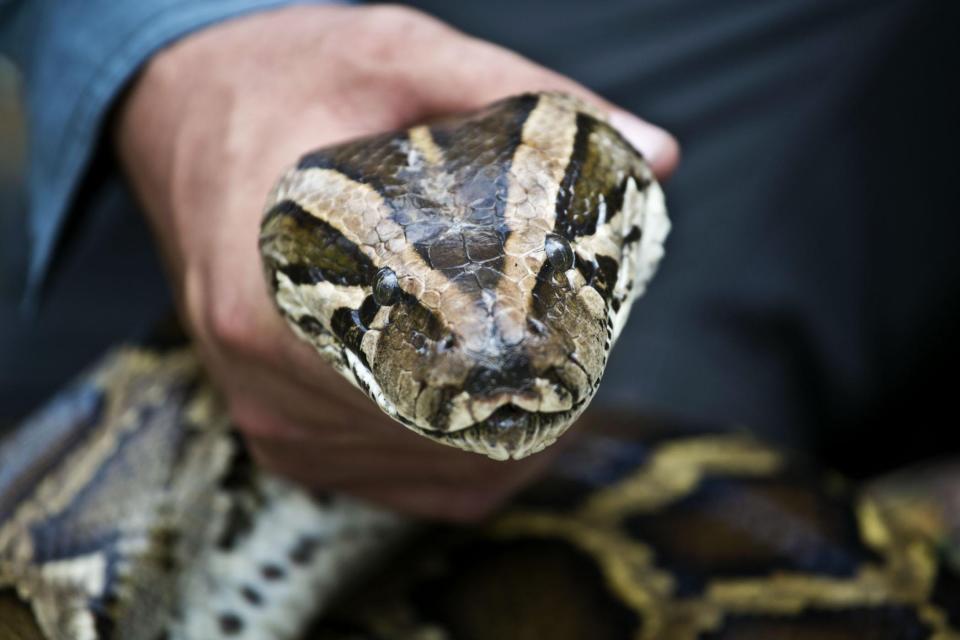
“This is one of those things like when you know what your purpose is, you just know,” said Siewe, a professional python hunter who has picked up a nickname, The Python Huntress.
She too works with the FWC and the South Florida Water Management District’s programs to catch pythons.
“A lot of people had jobs in addition to this [python hunting] because it doesn’t pay much. But for me, I didn’t,” Siewe said.
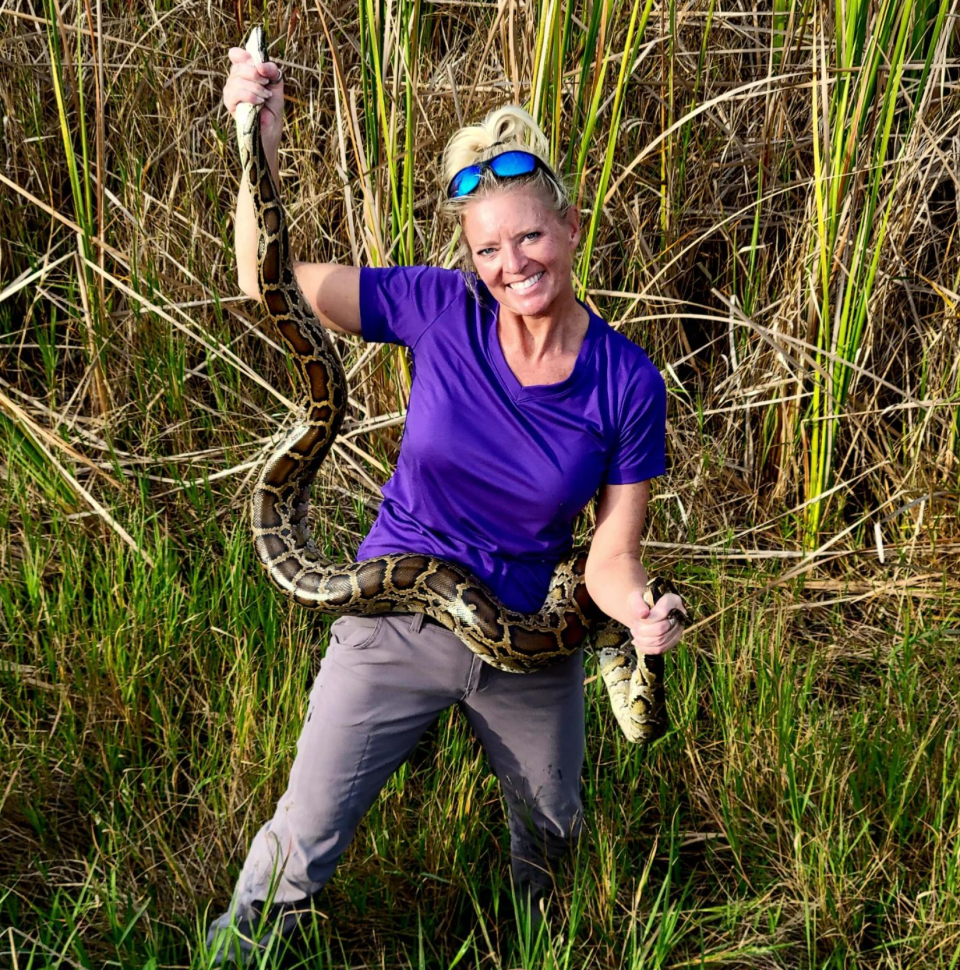
For four years, Siewe caught pythons with the water management district's program. Recently she said she began guiding python hunts unaffiliated with those agencies.
“I made more in the first month than I used to in a whole year contracted by the other programs,” said Siewe.
With 400 pythons caught over the past four years, Siewe is one of the state’s top hunters. She’s learned their patterns and where to find them — although it’s not easy.
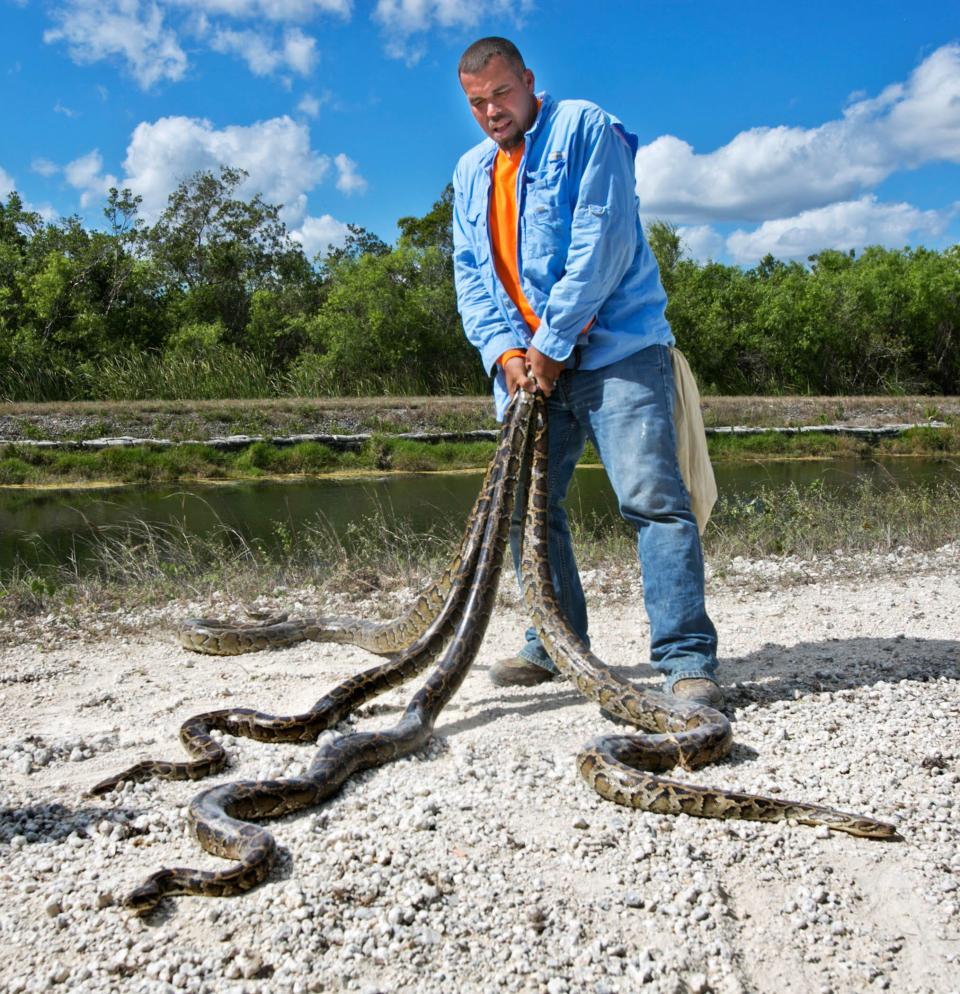
She's been bitten dozens of times. “They have a mouth full of razor-sharp teeth,” said Siewe, who says she does it not only for the thrill but for the wildlife.
“It’s important to try to get this figured out because we're going to lose animals and birds — and you know this can change the entire ecosystem in ways we can’t comprehend.”
This story was produced by MediaLab@FAU, a project of Florida Atlantic University School of Communication and Multimedia Studies. If you would like to publish this article, please credit the writer at MediaLab@FAU. The reporter can be reached at bkubach2020@fau.edu.
This article originally appeared on Palm Beach Post: Pythons in Florida Everglades hard snake to eradicate

